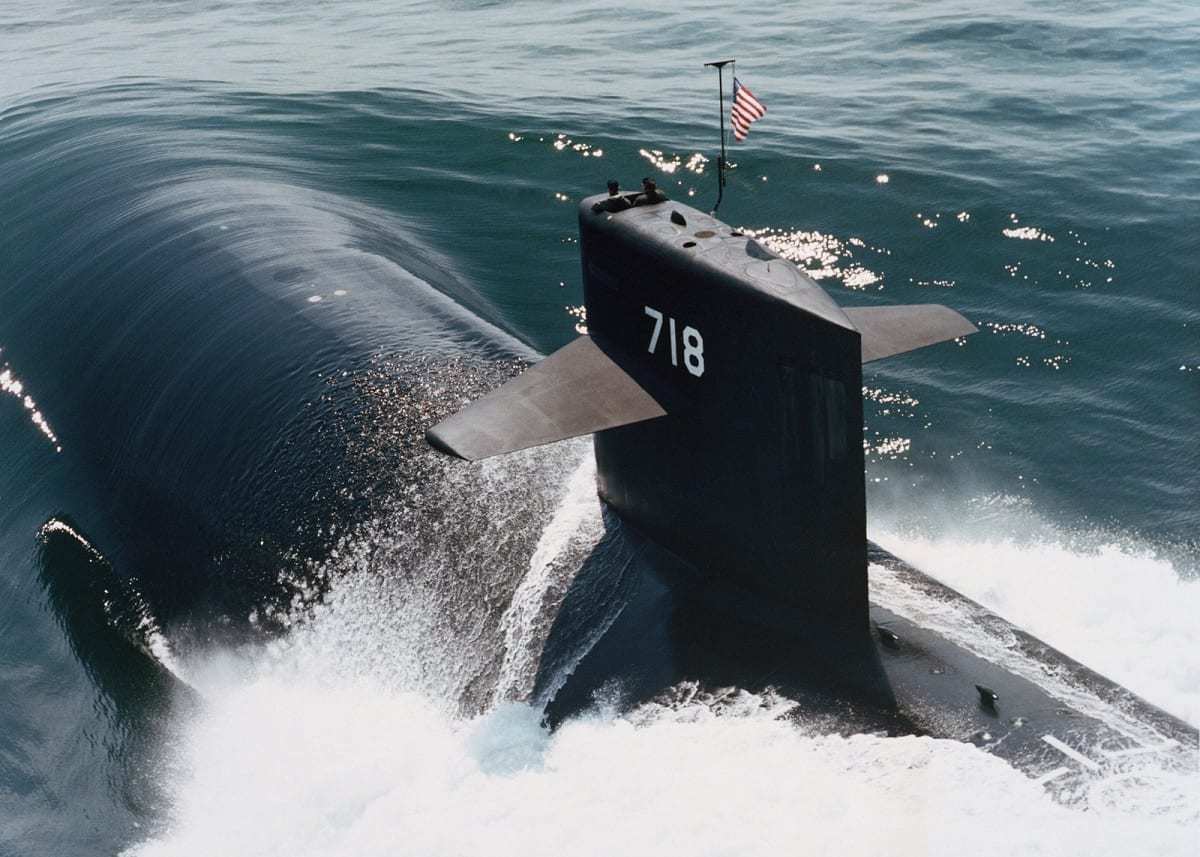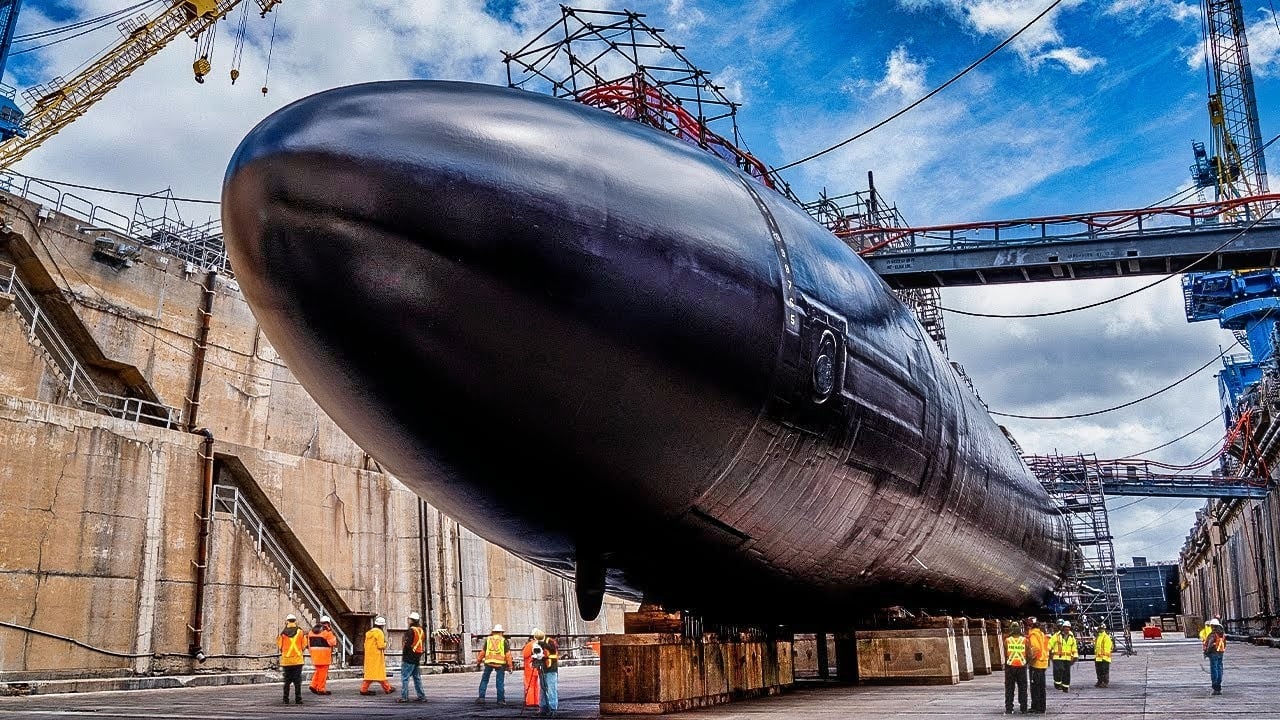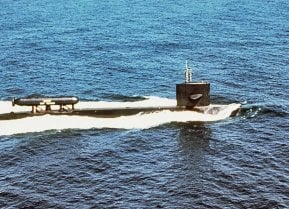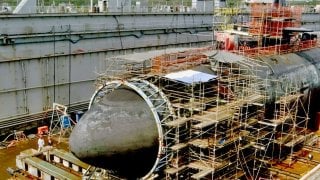'Gut Punch' to the Navy: Nuclear Attack Submarine Went Boom Into an Underwater Mountain
In 2005, the USS San Francisco, a U.S. Navy Los Angeles-class submarine, struck an uncharted seamount at 30 miles per hour, 525 feet below sea level, southeast of Guam.
What You Need to Know: In 2005, the USS San Francisco, a U.S. Navy Los Angeles-class submarine, struck an uncharted seamount at 30 miles per hour, 525 feet below sea level, southeast of Guam.

-The severe collision resulted in one fatality and 98 injuries, but the submarine managed to surface and return to port, thanks to the crew's efforts.
-The Navy found the incident was due to outdated charts and poor judgment, resulting in disciplinary actions for Commander Kevin Mooney and six crew members.
-Despite this, 20 crew members received commendations for their response, allowing San Francisco to ultimately return to service after extensive repairs.
The Incredible Story of the USS San Francisco’s Near-Disaster
We hear a lot about how well-built and state-of-the-art U.S. Navy submarines are, with many experts telling us they are the best on the planet.
Back in 2005, a U.S. Navy attack submarine was put to the test when it smashed into what many would call an 'underwater mountain'.
As crazy as it sounds, the submarine did not sink and was able to get back to port. Here is what one expert explained about the incident and his analysis of how the sub made it home.
USS San Francisco (SSN 711): A Crazy Submarine Story
Typically, it is fighter and bomber pilots who need to be concerned with mountains – especially while flying in conditions with low visibility. Tragically, it was back in January, 2022 that a South Korean Air Force pilot was killed after his F-5E fighter jet crashed into a mountain south of Seoul due to poor visibility.
Yet, it isn’t just the “flyboys” who need to watch out for mountains.
Back in 2021, a U.S. Navy nuclear-powered submarine collided with an “uncharted seamount” – also known as an underwater mountain. The USS Connecticut, a Seawolf-class fast attack submarine, hit the then-unidentified object in international waters in the South China Sea on Oct. 2, 2021 resulting in moderate to minor injuries to 11 crewmembers.

That incident was the first involving a U.S. Navy submarine since USS San Francisco (SSN 711) also hit an uncharted seamount in 2005, which sadly resulted in numerous injuries as well as one death among the crew. Such collisions are uncommon but likely impossible to completely avoid as researchers believe there are more than 100,000 seamounts that rise more than 1,000 meters (about 3,300 feet) from the seafloor (Source: National Oceanic and Atmospheric Administration (NOAA)).
“New estimates suggest that, taken together, seamounts encompass about 28.8 million square kilometers of the Earth’s surface,” NOAA explained. “That’s larger than deserts, tundra, or any other single land-based global habitat on the planet.”
Collisions Could be Serious
A submarine hitting a mountain isn’t as extreme as an aircraft flying into one, but it is still quite serious. It is actually remarkable that the damage to USS Connecticut wasn’t greater. Moreover, it is practically a miracle that USS San Francisco didn’t suffer catastrophic damage as it reportedly struck the uncharted seamount at some 30 miles an hour, and at a depth of 525 feet.
That incident occurred on January 8, 2005, some 675 km (364 nautical miles, 420 statute miles) southeast of Guam while the submarine was traveling at maximum speed. The resulting collision was so serious that the vessel suffered significant damage, and there was a struggle to maintain positive buoyancy to surface after the forward ballast tanks were ruptured, while the sonar dome was severely damaged. In total 98 crewmen were injured, suffering broken bones, lacerations, and back injuries. Machinist’s Mate Second Class Joseph Allen Ashley, 24, of Akron, Ohio, died the following day from head injuries.
Fortunately, the inner hull was not breached and more importantly, there was no damage to the boat’s nuclear reactor. In fact, thanks to the efforts of the command staff and crew, USS San Francisco was able to surface and was accompanied back to port under escort from the USCGC Galveston Island (WPB 1349), USNS GYSGT Fred W. Stockham (T-AK-3017), and USNS Kiska (T-AE-35), while MH-60S Knighthawk helicopters and a P-3 Orion further provided aid. It took the submarine, traveling at just 10 miles per hour, some 52 hours to reach Guam.

Temporary repairs were made in Guam before the ship was sent to Pearl Harbor for a more extensive refurbishment. As the USS Honolulu was set to retire in 2007, while the USS San Francisco was scheduled to remain in service until at least 2017, the U.S. Navy opted to take the nose from the former boat and give the latter a much-needed “make over.”
USS San Francisco was finally returned to service in April of 2009.
Sailors Blamed, Others Honored
An investigation found that Commander Kevin Mooney, San Francisco‘s commanding officer (CO), at fault for the incident – citing poor judgment that led to the collision. A Navy investigation also found the boat’s crew wasn’t using the most up-to-date charts to plot their course.
The U.S. Navy relieved Mooney of his command, and also issued him a letter of reprimand. However, he was not charged with any crime, nor was he court-martialed. In addition, six crew members were also found guilty at their own non-judicial punishment hearings (“Captain’s Mast”) of hazarding a vessel and dereliction of duty, and they were reduced in rank and given punitive letters of reprimand.
More importantly, for their actions in the crisis, 20 other officers and sailors received awards, including letters of commendation, the Navy and Marine Corps Achievement Medal, the Navy and Marine Corps Commendation Medal, and the Meritorious Service Medal.
“Although the grounding incident compelled me to punish and remove him from command, in my opinion it does not negate 19 years of exemplary service,” U.S. 7th Fleet Commander Vice Adm. Jonathan W. Greenert wrote in his report.
“Prior to the grounding incident, USS San Francisco demonstrated a trend of continuing improvement and compiled an impressive record of achievement under Mooney’s leadership. Moreover, the crew’s post-grounding response under his direct leadership was commendable and enabled the sub’s recovery and safe return to port.”
Expert Biography: Peter Suciu, Defense Analyst
Peter Suciu is a Michigan-based writer who has contributed to more than four dozen magazines, newspapers, and websites with over 3,000 published pieces over a twenty-year career in journalism. He regularly writes about military hardware, firearms history, cybersecurity, and international affairs. Peter is also a Contributing Writer for Forbes.
All images are Creative Commons.


